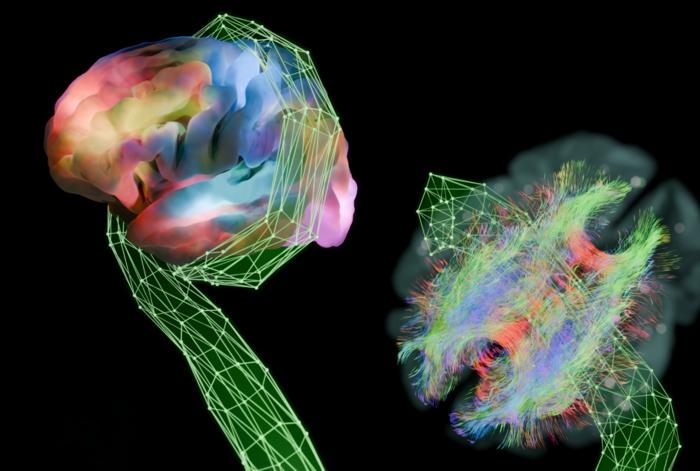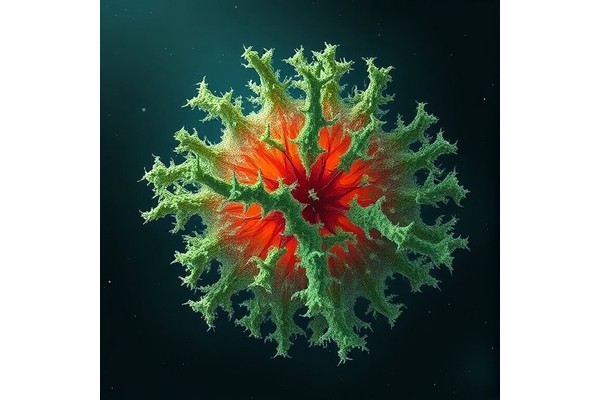Charting the Links Between Brain Structure and Function
Charting the Links Between Brain Structure and Function

In a groundbreaking advancement that edges neuroscience closer to deciphering the intricate relationship between brain structure and function, researchers at Weill Cornell Medicine have introduced a novel computational tool named the Krakencoder. This innovative algorithm represents a major leap forward in synthesizing data from multiple brain imaging techniques to provide a comprehensive and unified map of the brain’s connectivity networks, a feat that stands to revolutionize our understanding of how the brain’s wiring underpins behavior and cognition.
The human brain is both a labyrinth and a marvel—a complex and dynamic network where billions of neurons interact through myriad connections. Neuroscientists traditionally differentiate these connections into two broad domains: the structural connectome and the functional connectome. The structural connectome details the hardwired, physical pathways linking various brain regions—essentially the anatomical “roads” of the brain. By contrast, the functional connectome captures activity-based co-activation patterns, reflecting which regions communicate or “fire” in concert during tasks or rest. However, aligning these two maps has persistently challenged scientists, as anatomical proximity does not always correspond neatly to shared activity, confounding attempts to decode the brain’s full network. The Krakencoder serves as a groundbreaking bridge over this methodological divide, synthesizing structural and functional data to yield deeper insights.
Central to the Krakencoder’s development is the recognition that prior approaches to mapping brain connectivity present a fragmented mosaic rather than a holistic picture. The same individual scanned through magnetic resonance imaging (MRI) yields divergent connectomes depending on the imaging sequences and computational pipelines used—the so-called “elephant in the room” that neuroscientists face. Dr. Amy Kuceyeski, the lead investigator, describes this challenge vividly by comparing it to different people touching isolated parts of an elephant in a dark room and each forming distinct conclusions about what it is they feel. Each imaging pipeline provides only a partial view of the underlying neural network, leading to varied and sometimes contradictory results.
The Krakencoder algorithm addresses this fragmentation by functioning as a sophisticated autoencoder—a type of neural network designed to compress and reconstruct data—that can effectively integrate and reconcile multiple variants of structural and functional connectomes. The model ingests more than a dozen types of input data, effectively “fusing” diverse brain network representations into a singular, coherent neural map. This synthesis not only streamlines disparate views but enhances the predictive power and interpretability of brain connectivity data, overcoming prior methodological limitations.
The researchers trained the Krakencoder on an extensive dataset derived from over 700 participants from the comprehensive Human Connectome Project (HCP). This landmark NIH initiative provided a wealth of both structural and functional MRI scans, collected with standardized protocols, allowing for rigorous algorithm training and validation. Remarkably, the Krakencoder could predict an individual’s functional connectome from their structural data approximately 20 times more accurately than previous analytical models, signifying a profound improvement in bridging structure-function gaps in neuroscience.
Beyond mapping connectivity, the Krakencoder’s internally compressed representations demonstrated predictive capabilities for salient demographic and cognitive traits. For instance, the model accurately predicted age, sex, and various cognitive performance scores based solely on the unified connectome. This achievement is particularly noteworthy because cognitive phenotypes have historically been elusive targets for neuroimaging-based prediction, reflecting the complexity of linking brain networks to behavior. The Krakencoder’s success in this arena highlights its potential as a transformative tool for cognitive neuroscience and personalized medicine.
An exciting implication of the Krakencoder lies in its prospective clinical utility. Dr. Kuceyeski and colleagues plan to integrate the Krakencoder with their network modification tool called NeMo, which models how brain lesions affect connectivity. This combined pipeline holds promise for mapping and predicting functional outcomes in individuals with brain injuries, such as stroke patients. Early studies within the lab, led by PhD student Christie Gillies, indicate that functional connectomes reconstructed by the Krakencoder can better forecast motor and language recovery outcomes compared to traditional methods, suggesting a new horizon for prognosis and treatment planning.
Furthermore, the Krakencoder-enabled approach could illuminate the brain network pathways fundamental to recovery and rehabilitation. By pinpointing circuits whose engagement facilitates functional restoration, this technology opens avenues for targeted neural stimulation therapies. Transcranial magnetic stimulation (TMS), for example, which employs time-sensitive magnetic pulses to activate specific brain regions, could be leveraged to enhance the function of damaged networks identified through these models, potentially accelerating recovery and improving patient outcomes.
This methodological breakthrough also contributes vital insights into fundamental neuroscience questions about how the brain supports complex behaviors. While neuroscientists know that the physical substrate—the anatomical connections—sets the stage, the patterns of neuronal firing choreographed by these connections during cognitive tasks remain less well understood. The Krakencoder’s capacity to unify and decode these relationships enriches our understanding of how cognition emerges from the interplay of structure and function, fostering new hypotheses about brain organization and plasticity.
From a technical perspective, the Krakencoder exemplifies the power of machine learning to surmount longstanding obstacles in brain mapping. Autoencoders are uniquely suited to compress high-dimensional data while preserving essential features, making them ideal for integrating heterogeneous connectome inputs. The Krakencoder leverages this design to unravel the complexity of brain networks, capitalizing on the depth and breadth of MRI-based data produced by diverse pipelines and scanning protocols to synthesize a robust, singular representation.
Moreover, this integration addresses a critical issue in modern neuroscience—the reproducibility and consistency of connectome research. Different research groups employing varying MRI acquisition and processing strategies have historically generated inconsistent results, hampering the broader application of connectome findings. The Krakencoder’s ability to reconcile these disparate datasets and standardize representations could help build consensus across studies, fostering the development of reliable biomarkers and unlocking the translational potential of connectomics.
The implications of the Krakencoder extend far beyond academic curiosity. Mapping how structural and functional brain networks relate to individual cognitive capacities and behavior may usher in an era of precision neuroscience. Such mapping can enable early detection of neurological decline, personalized interventions in psychiatric and neurodevelopmental disorders, and tailored rehabilitation protocols for brain injuries. It could also spur innovative approaches in neurotechnology and brain-computer interfaces by defining stable, functionally meaningful brain network signatures.
In sum, the Krakencoder represents a pivotal stride toward elucidating the brain’s complex connectome by harmonizing anatomical and functional perspectives into a unified framework. With its demonstrated capacity to predict individual brain function from structure, its potential to inform clinical outcomes, and its alignment with cutting-edge machine learning paradigms, this algorithm provides a powerful new lens through which to understand the neural basis of cognition and behavior. The ongoing work integrating Krakencoder with lesion modeling tools promises not only to advance neuroscience but to tangibly improve patient care, marking a critical evolution in brain research.
Article Title: Krakencoder: a unified brain connectome translation and fusion tool
News Publication Date: 5-Jun-2025
Web References:
– Study published in Nature Methods: https://www.nature.com/articles/s41592-025-02706-2
– Human Connectome Project: https://neuroscienceblueprint.nih.gov/human-connectome/connectome-programs
Image Credits: Keith Jamison
Keywords: Brain structure, Brain tissue, Mathematical functions, Cognitive function
Bronze Age Breakthrough: Dietary Shifts Spark Major Societal Transformation
Next PostNew USF Study Reveals Why Consumers Continue to Be Deceived by Fake Online Reviews
Shining Bright: Diamonds Emerge as Cutting-Edge Sources for Quantum Information







